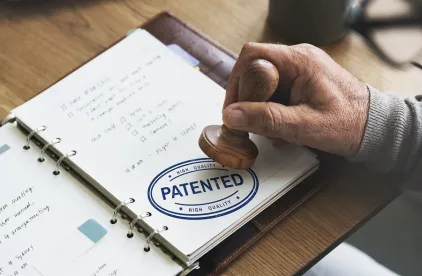As the world grapples with its response to COVID-19, the availability and nature of intellectual property protection afforded for diagnostic tests, treatments, vaccines, and accompanying data is likely to have a significant impact on whether and how that information is shared—and therefore necessarily will implicate the response time for containing the virus and resolving the pandemic. This article explores those available protections, and how they may enhance or impede innovation. This article also discusses several alternative approaches that could be used during these extraordinary times to incentivize swift collaboration while still protecting the financial interests of the innovators.
Biotechnology and pharmaceutical companies devote substantial sums of money to research and development (“R&D”). For example, the average R&D costs to bring a novel drug to market is 2.7 Billion dollars. What is the incentive? And how do these companies recoup this cost?
One word: Exclusivity. Granting the owner a monopoly for a limited period of time serves to provide a return on the investment and replenishes the R&D pipeline for future breakthroughs. The patent system grants this limited monopoly in exchange for an enabling disclosure of the invention.
But during an international crisis—or a global pandemic to be more precise—critics argue that this exclusivity can slow progress. This raises an important policy question: What is the ideal intersection between properly incentivizing the massive amount of capital investment needed to fund R&D, while at the same time allowing for adequate data sharing and access to critical information, advancements, and the like, in order to respond efficiently and effectively to the pandemic?
The U.S. Patent System Already Has These Mechanisms in Place . . . for Some Inventions.
On March 31, 2020 a group of scientists, lawyers, entrepreneurs and other individuals initiated the “Open COVID Pledge,” encouraging owners of intellectual property (“IP”) related to COVID-19 to grant free licenses to their patented and copyrighted technologies—recognizing that IP rights could hinder research on potential cures, vaccines and diagnostics.
Similarly, companies have independently extended free licenses for relevant technology and innovations. For example, medical device giant, Medtronic, recently issued a special, permissive license for its portable ventilator—sharing the design specifications for free “to enable participants across industries to evaluate options for rapid ventilator manufacturing to help doctors and patients dealing with COVID-19.” And, Labrador Diagnostics extended royalty-free licenses to other companies seeking to use its diagnostic technology for developing new coronavirus tests.
Other companies with patented IP, developed using government funds, may soon follow suit so as not to spur so-called “march-in” rights under the Bayh-Dole Act—wherein the federal government may require an entity to grant a license to the fruits of government-funded research under certain circumstances to protect the public interest. Although no federal agency has ever exercised its march-in power—at least theoretically—the option exists.
Similarly, the federal government could exercise its power of eminent domain in the form of compulsory licensing—granting use of the patented invention without the owner’s consent, and entitling the owner to seek reasonable compensation later. Indeed, there has been much discussion about the government exercising this power under 28 U.S.C. § 1498. Section 1498 permits the federal government to “use[] or manufacture[]” technologies protected under current U.S. patents without the permission of the patent holder, and provides the patent holder with an action “for the recovery of his reasonable and entire compensation.” In other words, when the federal government infringes, patent owners are entitled to receive monetary compensation but lose the power of exclusion through injunctions. Use of section 1498 therefore enables the government immediately to achieve various public benefits—lowering prices, expanding supply, and shielding socially beneficial activity (such as diagnostic testing) from liability risk or injunctive exclusion.
On a broader level, patentees are incentivized to ensure that sharing is effective, as companies who can benefit from a free license have less incentive to develop a competing alternative.
But, again, all of this presumes that the IP contained within these licenses are patent protected. And the licenses are usually only temporary—set to expire, for example, one year after the World Health Organization declares that the pandemic is over. This is an oft-forgotten benefit of the patent system in general—because meaningful public disclosure accompanies the limited monopoly granted to the patent holder, there is little long-term risk for the inventor to grant this form of license. Once the emergency has passed, the license can simply be revoked, and the public will once again be excluded from practicing the invention for the remaining life of the patent.
But What if the Relevant Intellectual Property is Not Protected By a Patent?
In the last decade, the landscape of biotechnology patent eligibility has changed drastically. In its 2012 decision, Mayo Collaborative Servs. v. Prometheus Labs., Inc., the Supreme Court invalidated patents that claimed methods for calibrating the proper dosage of particular drugs to treat autoimmune diseases because they merely “recited” laws of nature. Then, in 2013, in Ass’n for Molecular Pathology v. Myriad Genetics, Inc., the Court held that isolated DNA segments—or genes—were not patent eligible because these naturally occurring DNA segments were a product of nature. These decisions invalidated thousands of patent claims to diagnostic methods and isolated DNA previously issued by the U.S. Patent and Trademark Office.
Since then, critics have argued, whether or not patents will be extended—or upheld when challenged—for novel discoveries in this industry is increasingly uncertain. For example, a claimed process for cryogenically freezing liver cells was patent eligible,[1] but a method for detecting a certain enzyme in a patient’s blood and correlating the results to the risk of cardiovascular disease was not.[2] Similarly, a method of tailoring treatment to achieve a specific outcome[3] and methods directed to new ways of using a natural substance to obtain particular treatment results were patent-eligible,[4] whereas claims directed to diagnosing a disease by detecting certain antibodies in the body were not.[5]
This diminished patent eligibility—and resultant uncertainty—has extended into diagnostic testing as well. For instance, a method for detecting bacteria that causes tuberculosis and determining its resistance to a common antibiotic was determined to be ineligible for patent protection.[6]
Does the unpatentability of certain innovations come at a cost?
The Alternative: Trade Secret Protection
With lingering uncertainty regarding the patentability of such discoveries, companies increasingly turn to trade secret protection to fill the gaps and protect their investments.
The Uniform Trade Secrets Act, adopted by every state but New York, and the federal Defend Trade Secrets Act define a trade secret as information that derives its economic value from not being generally known to the public and is the subject of reasonable efforts to maintain its secrets. Virtually any information—whether technical or commercial—may qualify for protection indefinitely if these requirements are met.
Public disclosure—which destroys the secrecy requirement—destroys the protection, and anyone may have access to the publicly disclosed information and use it at will. Once the trade secrets are revealed, the benefit of the intellectual property protection is lost—the holder has nothing left to protect. Critics argue that this has led to increased secrecy in research and reduced collaboration.
Has This Disparity in Treatment of Some Biotechnology Advancements Affected Our COVID-19 Response?
While perhaps there is less uncertainty surrounding the patentability of novel drugs, for instance, our response is not tied only to potential treatments. Consider the following examples:
- Diagnostic Tests. Believed by many to be the key to ending the lockdown and getting closer to a state of “normalcy,” the unpatentability of certain diagnostic tests[7] may disincentivize sharing methodologies, and hinder the necessary scalability to enable widespread testing.
- Polygenetic Risk Scores. Genetic variations or factors may coincide with an individual’s propensity for COVID-19 infection or progression. The significance of these correlations are naturally occurring, and precedent indicates that this information may not be patentable.[8] As companies discover this information and attempt to utilize it to develop tailored treatment mechanisms, this information likely will be treated as a trade secret—inhibiting the rapid data sharing required for time sensitive scientific progress.
Simply put, efficient data sharing is critical to a swift response.
Is There a Way to Ensure This Information is Shared Effectively During a Crisis?
- “March-In” Rights. A framework for these rights could be established for information generated through federal financial assistance. These rights could be limited in the same way they are in the patent realm—allowing government access based on public necessity.
Yet, federal funding does not typically pay the full cost of R&D, and attaching any conditions on federally funded research may dampen researchers’ interests to undertake them altogether. This is particularly true where trade secrets are involved. March-in rights likely would diminish any economic benefit of commercial development if companies are required to share information that they have made significant investments in developing—and essentially rendering them worthless once the secrets are exposed.
Further, from a practical standpoint—unlike IP covered by a patent that is more clearly defined—it may be difficult to trace the federal funding to particular trade secret information.
And, of course, these rights would only apply to information procured using federal funds, thereby eliminating applicability to countless critical discoveries.
- Compulsory licensing. The federal government has the power of eminent domain, which it may exercise for the public good, to include acquisition of intellectual property.
However, much like the march-in rights discussed above, any preemptive framework obligating licensure may severely diminish interest.
From a practical standpoint, the government cannot compel what it does not know exists; unlike for IP protected by a patent, the owner of a trade secret doesn’t have to disclose in any meaningful way the protected information. Thus, while the government may be able to compel licensure for unpatentable diagnostic testing capabilities, for instance, this will be difficult to enforce for internal data sharing for information such as polygenetic risk scores.
Finally, the requirement to provide just compensation to the owner may render this option entirely cost-prohibitive.
- Voluntary Disclosure. Complete open disclosure is unlikely because the value of a trade secret is destroyed when exposed. Yet, companies remain free to enter into mutual nondisclosure and confidentiality agreements in order to facilitate sharing of information.
But the necessity of such agreements will add cost and delay. Moreover, they are arguably incompatible with some types of cooperation desperately needed during a crisis, such as freely making information available so that anyone—including volunteers with 3D printers or other distributed manufacturing capability—can make use of it.
One option is an exception deployed in emergency situations, which serves to counteract the definitive destruction of the trade secret protection. For instance, a sort of pseudo-patent framework could be created whereby users of the unpatentable IP (that would have qualified for trade secret protection) would be required to pursue a license for continued use after the expiration of the emergency period—at least for a specified amount of time—allowing the inventor to recoup some of the cost of investment.
Although the true value of trade secret might never be restored, this limited monopoly, coupled perhaps with moral obligation, may be sufficient to spur the necessary investment.
In sum, the main rationale behind Myriad and its progeny may have been to confine the realm of patent protection to exclude naturally occurring phenomena in order to allow free access and utilization of such. Yet, in practice this precedent may have had an opposite effect. This effect has become particularly apparent during the current COVID-19 global pandemic, which requires an “all hands on deck” response. If patent protection—and the accompanying framework that allows widespread distribution of the innovation—is not available to certain scientific discoveries, it is imperative that an alternative exist. And bio-science companies must continue to be attentive to the ever-changing landscape of IP protection to select the form of protection that enables them to recover—and to continue to invest in—the costs of innovation.
FOOTNOTES
[1] Rapid Litig. Mgmt. Ltd. v. CellzDirect, Inc., 827 F.3d 1042 (Fed. Cir. 2016).
[2] Cleveland Clinic Found. v. True Health Diagnostics LLC, 859 F.3d 1352, 1360 (Fed. Cir. 2017).
[3] Vanda Pharms. Inc. v. West-Ward Pharms. Int’l Ltd., 887 F.3d 1117, 1134–36 (Fed. Cir. 2018).
[4] Natural Alternatives Int’l, Inc. v. Creative Compounds, LLC, 918 F.3d 1338, 1346 (Fed. Cir. 2019).
[5] Athena Diagnostics, Inc. v. Mayo Collaborative Servs., LLC, 915 F.3d 743, 751 (Fed. Cir. 2019).
[6] Roche Molecular Sys., Inc. v. CEPHEID, 905 F.3d 1363, 1374 (Fed. Cir. 2018).
[7] See e.g., Roche, 905 F.3d 1363.
[8] See e.g, Myriad, 569 U.S. 576.




 />i
/>i

